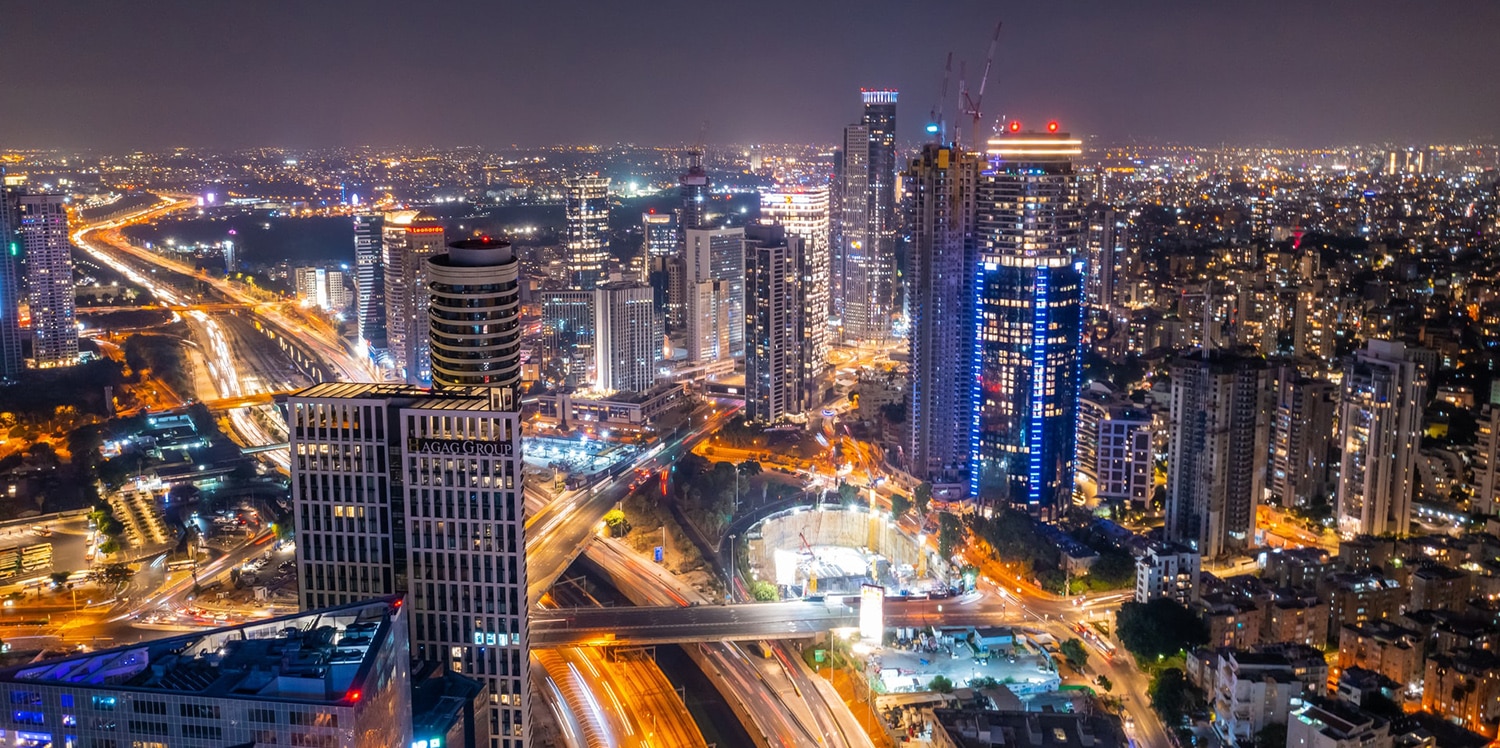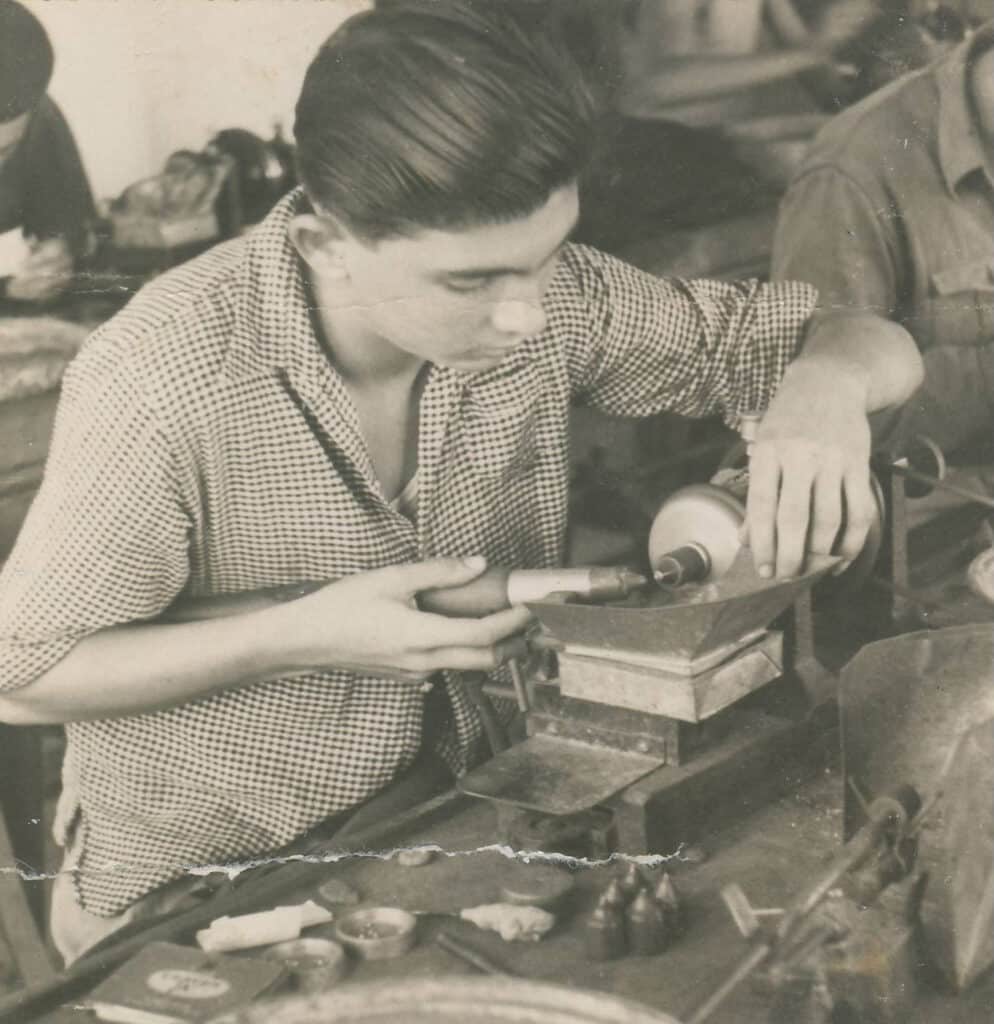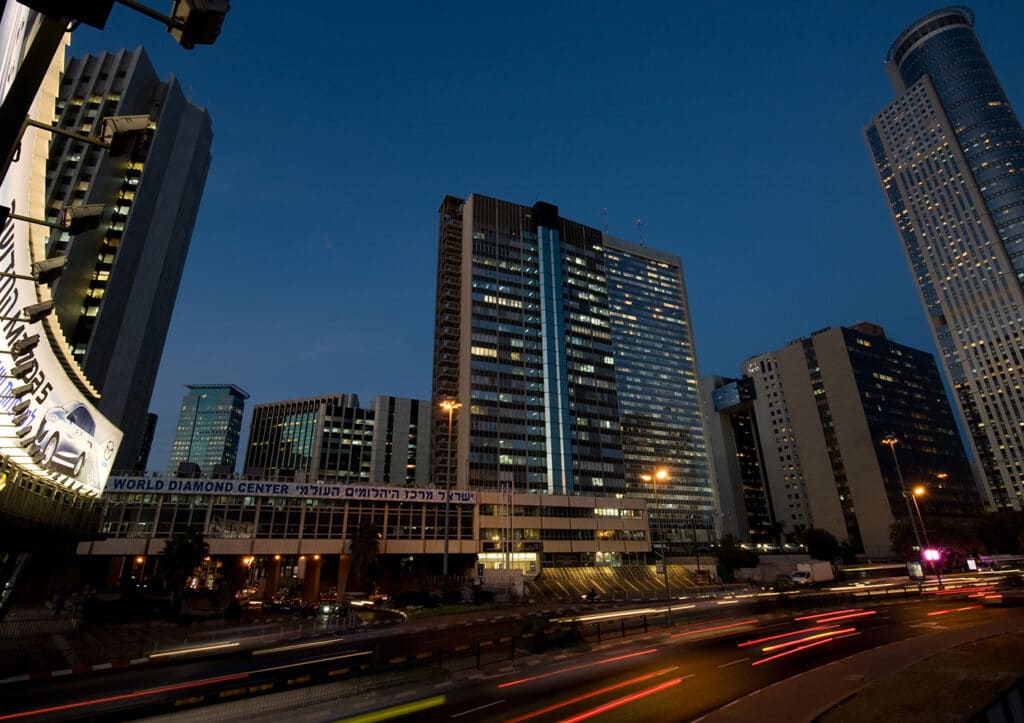Blog
Home » Diamonds blog » THE STORY OF ISRAEL’S DIAMOND INDUSTRY PARALLELS THAT OF THE COUNTRY AND ITS ECONOMY
Focus on

Israel at 74, looking across the skyline of Tel Aviv and the neighboring city of Ramat Gan, home to the country’s diamond industry. (Photo by Shai Pal on Unsplash.com)
On May 5, Israel celebrated 74 years since its establishment in 1948. Its story is by all counts remarkable, with an independent nation being state for the Jewish people just three years after they had emerged from the devastation of the Nazi holocaust, having lost more than one third of their number.
The story of Israel’s diamond industry is part and parcel with that of the state, developing from a handful of isolated workshops created by a immigrants from Holland and Belgium into one the world’s most important trading centers, and an anchor of the national economy.
The headquarters of the industry, the Israel Diamond Exchange complex in Ramat Gan, is one of the largest dedicated gemstone-trading facilities on the face of the earth. Home to the giant Israel Diamond Exchange, and also to the Israel Precious Stones and Diamond Exchange, the facility houses more than 1,000 companies.
Just 100 years earlier, what is today a densely-packed business district of metal and glass skyscrapers was largely open fields, and the cities that surround it, Ramat Gan and Tel Aviv, essentially did not exist.

A diamond cutter, during the early days of the Israeli diamond industry in the 1940s.
FORGED IN TURMOIL OF WORLD WAR II
The establishment of a diamond industry in Israel actually preceded the creation of the state in 1948. Already in 1908, when the Bezalel Art Academy was founded in Jerusalem, it was proposed that it become an incubator for a diamond-cutting and jewelry-manufacturing industry. But the Ottoman regime, which ruled the region until 1917, refused to waive customs duties on the import of diamonds for the purpose of training and education, and the idea was dropped.
But 25 years later, with the British now in charge, a group of Belgian Jews led by Aharon Moritz immigrated to pre-state Israel with the intention of establishing a diamond-polishing plant. Moritz lobbied the British Mandate government to waive duties levied on imported rough diamonds, and his effort eventually proved successful in 1936.
As it was, the original polishing plant imitative was unsuccessful, but the British acquiescence to allow the customs-free import of rough led to the establishment of a number of rudimentary polishing plants in Tel Aviv, , and in 1937 the first fully-fledged diamond factory was set up in the nearby town of Petah Tikva. That same year, the first trade association, the Palestine Diamond Club, was founded in Tel Aviv.
The outbreak of World War II and Germany’s occupation in 1940 of Holland and Belgium was a critical period. In the years leading up to the conflict, as concerns heightened about the possible fate of Jews in Europe, immigration to pre-state Israel increased considerably, and among those who arrived were experienced diamond cutters from the two Lowland countries.
With the Nazi flag flying over Amsterdam and Antwerp, their diamond cutting plants fell silent. In an effort to keep the business afloat, De Beers pushed for the growth of alternative manufacturing centers, among them Palestine, Cuba, Mexico and Brazil, all of which were now home to diamond cutters who had fled Europe. In Tel Aviv, Petah Tikvah and a new cutting center in Netanya, the number of workers employed in the industry rose to some 4,000 people, and by the end of the war exports of polished diamonds stood at about $16 million.
But with the return of peace of Europe, the supply of rough diamonds to the fledgling cutting centers dried up, as De Beers fulfilled a promise to support Antwerp’s struggle to revive its dormant industry. Nonetheless, although the number people employed in the cutting factories of Tel Aviv, Petah Tikvah and Netanya was more than halved, the nucleus of a diamond industry remained.
When the State of Israel was declared in May 1948, employment in the sector fell to only about 800 workers, as young people were mobilized into the army to defend the new nation. However, in 1950, De Beers began regular sales of rough diamonds to Israeli factories, and the long-term future of the industry was secured.
THE FIRST MODERN DIAMOND TRADING CENTER
The Israel Diamond Exchange was formally established in 1951 in rented quarters in Tel Aviv. The rapid development of the Israeli diamond sector brought about a dramatic increase in membership in the new bourse, and industry leaders understood a permanent trading facility was needed to serve the requirements of the growing trade. After some deliberation, a plot in the adjacent city of Ramat Gan was selected as the permanent site for the Israel Diamond Exchange, and in 1968 the Shimshon Building was inaugurated, providing some 15,000 square meters of office and commercial space.
The concept devised for the new trading complex was revolutionary. What was planned was a secure unit, in which all services would be provided within a single perimeter, enabling diamantaires to move around freely and securely. This included the diamond trading floor and bourse offices, government representatives, banks, shipping companies, insurance companies and restaurants.

The Israel Diamond Exchange complex in Ramat Gan, which in many ways set the standard for what is today considered a modern gemstone trading center
As more buildings were added to the complex – Maccabi and Noam in the 1980s and Yahalom in the 1990s – bridges and walkways were constructed to connect them, meaning diamantaires could move from building to building, without leaving the secure zone.
The evolution of the Israel’s diamond industry reflects that of the nation’s economy in general. When the State of Israel was established 1948, it was an economic backwater with a gross domestic product (GDP) per capita of some $5,000. Today its GDP per capita is $43,500, putting it among the top 20 nations in the world.
In 1948 total Israel diamonds exports were not more than $10 million. According to official data, exports of rough and polished diamonds from Israel in 2021 amounted to $5.5 billion.
